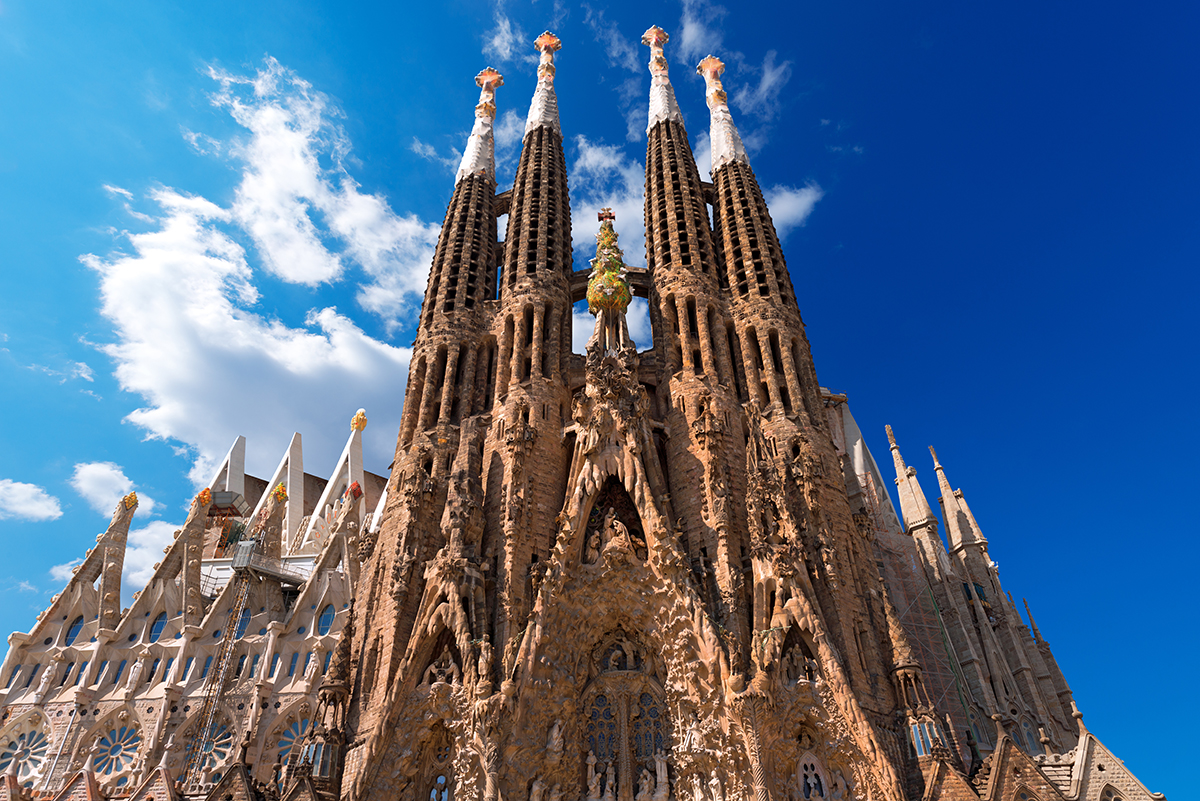Article by Vivion O’Kelly
He died mistaken for a beggar, run down by a streetcar in Barcelona, and would probably have survived if not for his shabby appearance. Little did the authorities know that this man, Antoni Gaudí, had designed some of the most beautiful and extraordinary structures in the world, mostly in their own city, and would come to be regarded as one of the greatest architects of modern times.
His magnum opus, the Sagrada Familia Basilica stands alongside the great European cathedrals built in the Middle Ages, one essential difference being the absence of flying buttresses. Like them, it is a UNESCO World Heritage Site, as are six other works designed by Antoni Gaudí, all of them in and around Barcelona. The Sagrada Familia is Spain’s most visited site, and although unfinished for nearly a century and a half, it has become the symbol of the city and one of the world’s most recognized structures.
It is, of course, very different in many respects from your average Gothic cathedral, and more so when finished. It is a synthesis of the architect’s life influences, from neo-Gothic with Moorish and Oriental touches to Catalan Modernisme (Art Nouveau) and a generous dose of Gaudí’s own idiosyncrasies. When questioned, sometime in the early 1920’s, about when exactly he thought the building would be finished, he is said to have remarked: “My client is not in a hurry”.

Although he created no school of his own, never taught and left few written documents, he has influenced many great architects in the past and continues to do so to this day. Some of his numerous assistants went on to become some of Spain’s most reputable architects, and masters like Le Corbusier, Pier Luigi Nervi, Oscar Niemeyer and Santiago Calatrava were influenced by him. The Munich Olympic Stadium, by Frei Otto, echoes Gaudi’s forms in its construction, and his influence can be seen in the work of Japanese architect Kenji Imai.
Gaudi, son of a coppersmith, showed no special brilliance as a student, but his interests were wide. In addition to architecture he studied French, history, economics, philosophy and aesthetics, and in later life studied a host of disciplines relevant to his craft, like illumination and acoustics. He sometimes failed courses, and when handing him his degree, the director of Barcelona Architecture School said: “We have given this academic title either to a fool or a genius. Time will tell”.
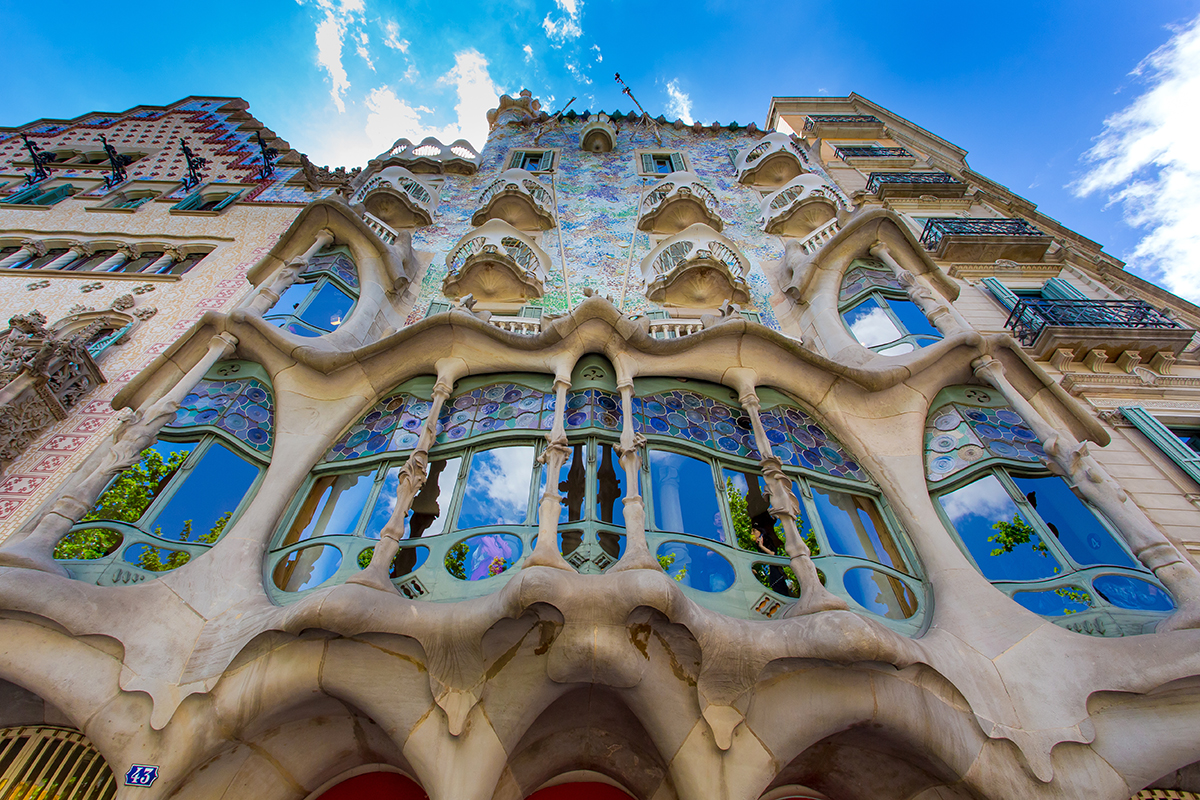
He was not fussy, in his early years, about what he designed. All kinds of house furnishings (including a dining room table and a prayer desk), lampposts, newsstands, a cemetery gate, crypts, wine cellars, gardens, a chair for a queen – if somebody commissioned it he was willing to do it, and it was, in fact, his functional and aesthetic design of a showcase for a glove manufacturer at the Paris World Fair in 1878 that attracted the attention of Catalan industrialist Eusebi Güell, who went on to commission some of the architect’s most memorable works. A happy consequence for Güell himself was that, like Peggy Guggenheim or Dr. Gachet, his name would live on in the work of the artist.
He was what we would now, perhaps, refer to as culturally xenophobic, and he certainly knew his worth: “We own the image. Fantasy comes from the ghosts. Fantasy is what people in the North own. We are concrete. The image comes from the Mediterranean. Orestes (myth. Greek king) knows his way, where Hamlet is torn apart by his doubts.”
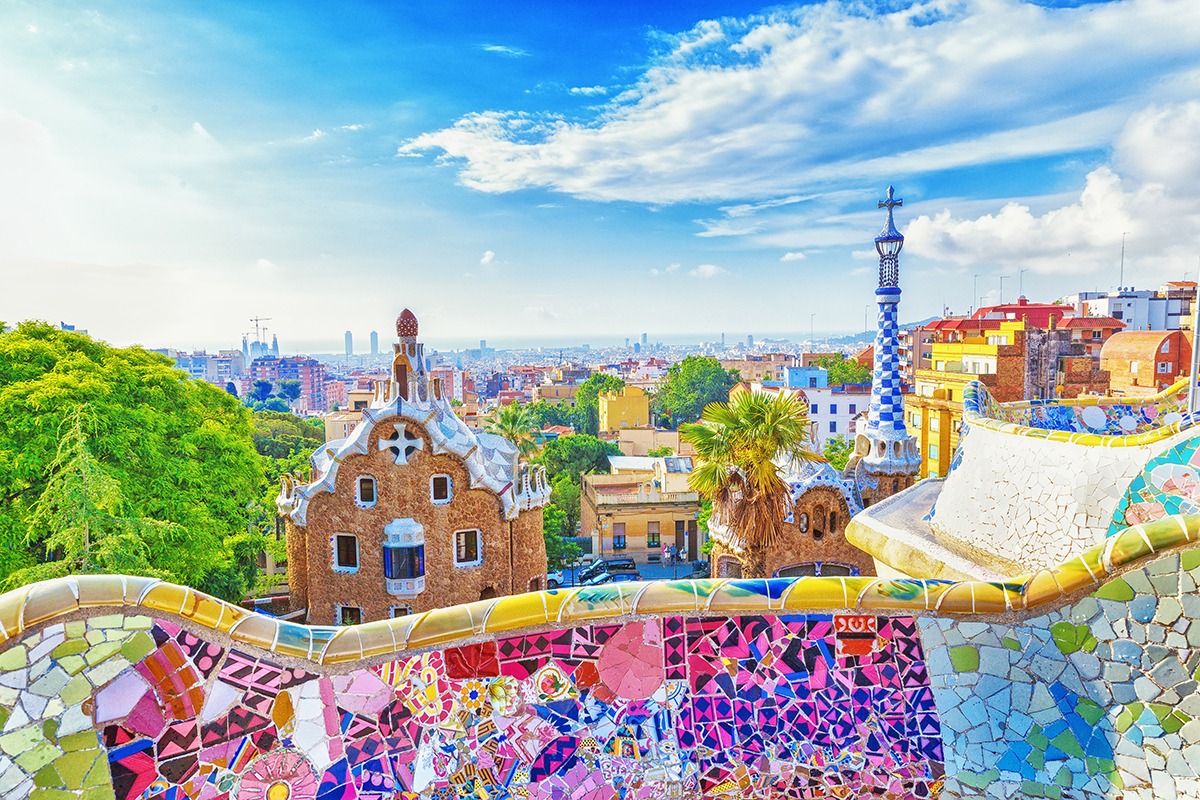
He took a broad view of architecture as a multifunctional design, in which every detail has to be harmoniously made and well-proportioned, prompting him to design the parts as well as the whole, from furnishings and illumination to wrought ironwork. This holistic approach to design also led him to a more comprehensive study of physics and geometry. To understand the geometry of his masterpiece, and more importantly, to understand how it remains upright, it is necessary, at least, to know the basic principles of the catenary curve. This is the curve an idealized hanging chain or cable assumes under its own weight when supported only at its ends. Think of the Gateway Arch in St. Louis, Missouri, which is a catenary curve upside down.
At a more concrete level, the design concept supporting the Sagrada Familia is based on trees, as we can see below. “’Do you want to know where I found my model?’ he once asked a visitor to his workshop. “An upright tree; it bears its branches and these, in turn, their twigs, and these, in turn, the leaves. And every individual part has been growing harmoniously, magnificently, ever since God the artist created it.”
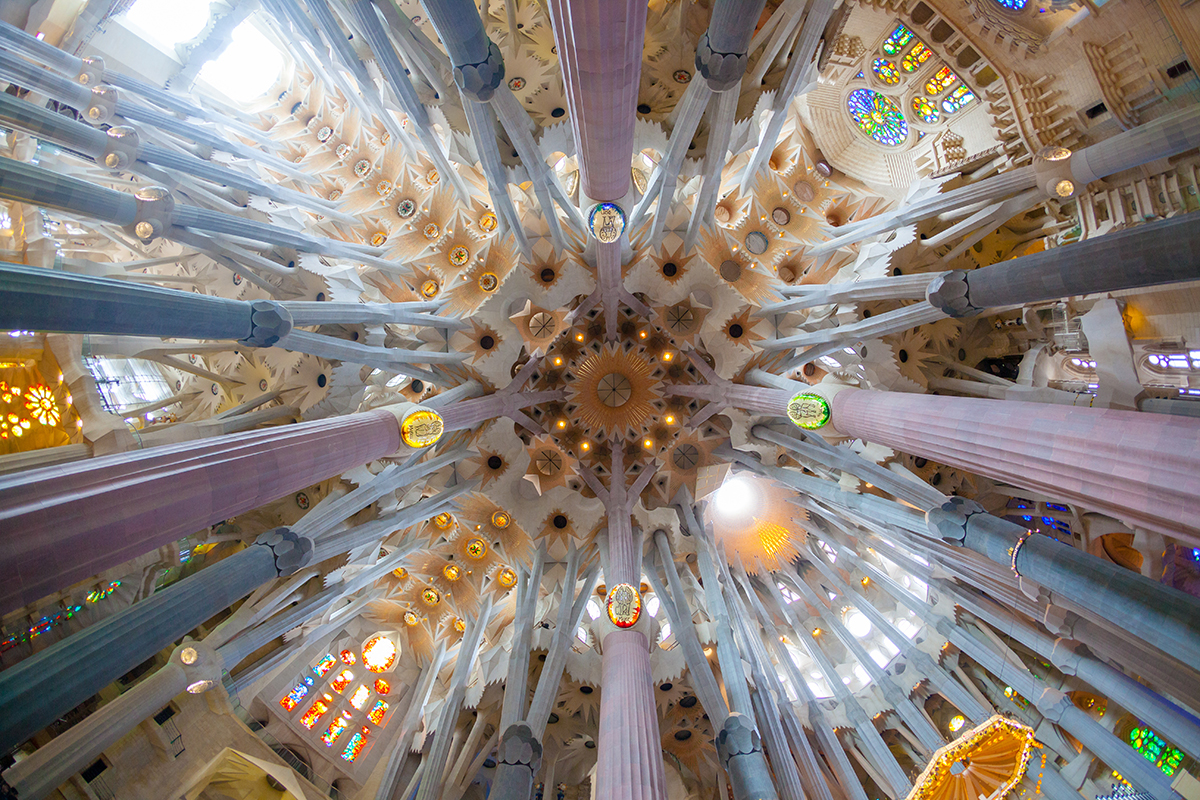
The Sagrada Familia, a quarter of which was built when Gaudí died in 1926, is scheduled to be finished on the centenary of his death in 2026. If not for the use of computer technology (stone, for example, is cut quickly off-site by a CNC milling machine), it would take a lot longer. It will be considerably taller than it is today, becoming the tallest religious building in the world when finished, with a central tower reaching 172 metres above street level. There will be a total of eighteen towers, twelve of which will represent the apostles, four the evangelists, one the Virgen Mary and the last one in the centre representing Christ. We now see only eight towers, the six central towers measuring approximately 90 metres high. The finished building will also be more colourful than it is now, when decorative elements are expected to be finished in the early 2030s. Symbolism is of prime importance throughout the structure, especially in the facades. There are three of them, the Nativity, the Glory and the Passion, the first two heavily sculpted and the third more austere.
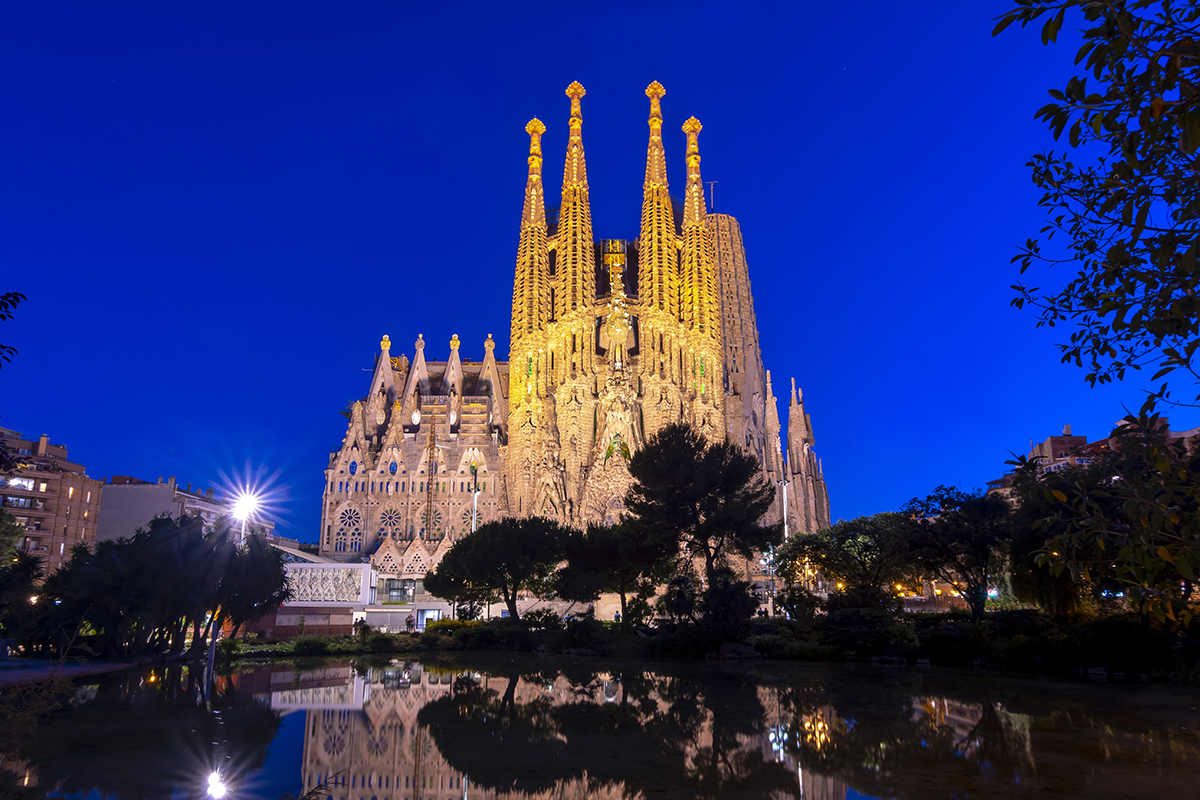
The pioneering high-rise architect Louis Sullivan was an early admirer of Gaudí, referring to the basilica (then cathedral) as the greatest piece of creative architecture of the time and “spirit symbolized in stone”. Walter Gropius described it as “a marvel of technical perfection”. Time Magazine called it “sensual, spiritual, whimsical, exuberant,” and British historian Gerald Brenan said about it: “Not even in the European architecture of the period can one discover anything so vulgar or pretentious.”
The building came under attack during the Spanish Civil War, when a group of anarchists set fire to the crypt. Many important documents and design models were lost, with some damage done to construction materials. Astonishingly, the Spanish Ministry of Public Works approved the building of a subway tunnel in 2010 that passes within metres of the building’s foundations.
Right now, of course, it is visited by nobody, but based on the long history of the great European cathedrals, people will be flocking from all over the world to see the Sagrada Familia for at least the next thousand years.





